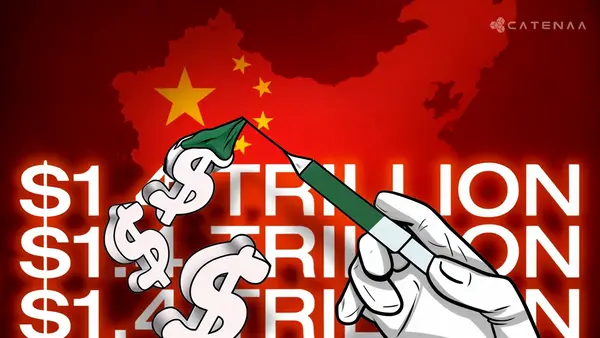New York, Monday, November 04, 2024-– China is reportedly considering a massive $1.4 trillion debt issuance over the next several years in an effort to reinvigorate its struggling economy, Reuters news agency has reported in an exclusive report.
The National People’s Congress (NPC) meeting, starting today, November 4 and ending on the 8th, is expected to confirm these plans, with the possibility of announcing additional stimulus measures if Donald Trump wins the upcoming US presidential election.
The debt plan, expected to be approved by China’s top legislative body, the Standing Committee of the National People’s Congress (NPC), aims to stabilize the nation’s fiscal outlook and address escalating local government debt, according to sources familiar with the matter.
The anticipated fiscal package includes 6 trillion yuan in new debt issuance through special sovereign and local government bonds. These funds are earmarked to address debt risks faced by local governments, especially from off-balance-sheet obligations.
The total debt issuance, which would equate to over 8% of China’s economic output, highlights Beijing’s urgency in tackling both the property sector crisis and local governments’ financial strains.
In addition to the proposed 6 trillion yuan in sovereign debt, the NPC may approve up to 4 trillion yuan in special-purpose bonds to fund property and land-related projects.
These bonds are intended to support local governments’ financial flexibility, especially in managing land supplies, and to alleviate liquidity challenges faced by both local governments and real estate developers.
The debt strategy also hints at a broader stimulus agenda, including potential capital injections into major state-owned banks and a push to stimulate consumer spending through incentives for consumer goods trade-ins and renewals.
China’s Central Bank had previously rolled out aggressive monetary policies in September, its most robust intervention since the COVID-19 pandemic. However, economists have warned that these moves might fall short without substantial fiscal backing.
This significant fiscal initiative, if fully realized, would mark one of China’s largest economic interventions since its $586 billion stimulus following the 2008 global financial crisis. However, unlike the 2008 package, which spurred a property boom, this round appears more focused on stabilizing local government finances and preserving economic growth amid ongoing structural challenges.
China’s economy has faced mounting pressures from a prolonged property market downturn, rising local government debt, and reduced consumer spending.


